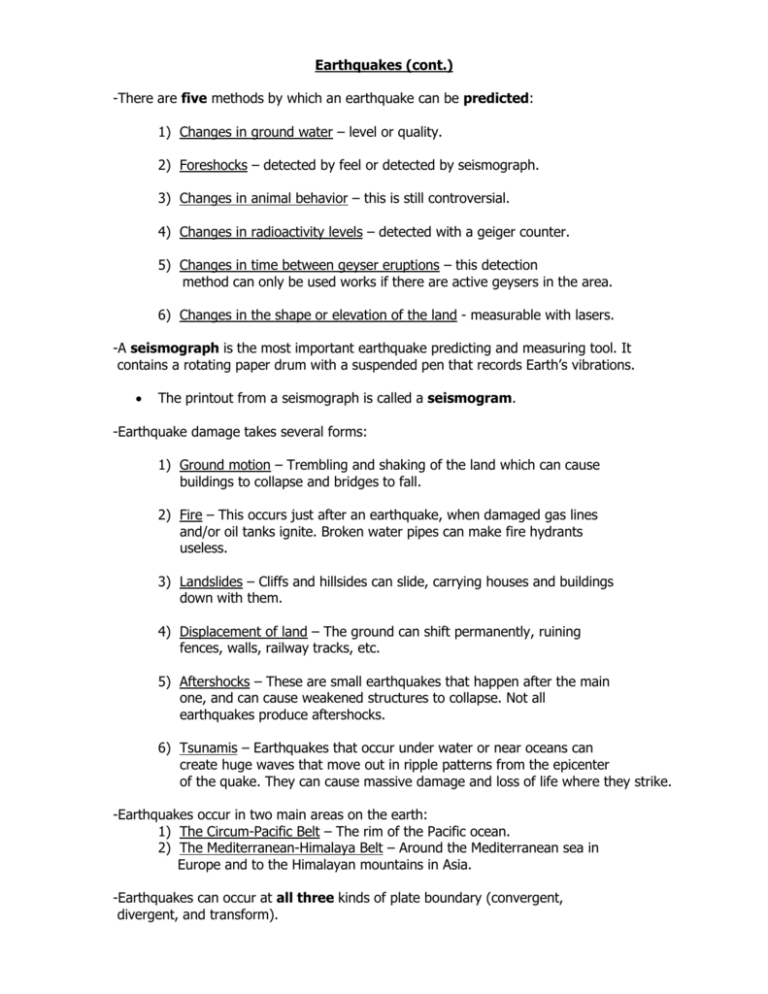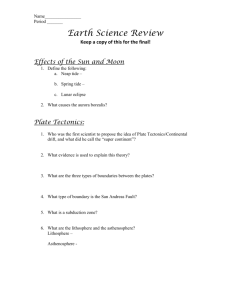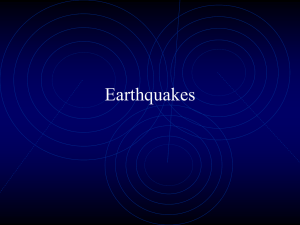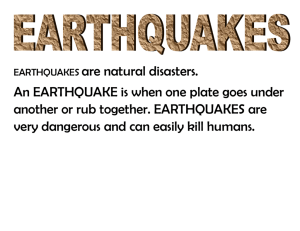Geology Notes – Earthquakes
advertisement

Earthquakes (cont.) -There are five methods by which an earthquake can be predicted: 1) Changes in ground water – level or quality. 2) Foreshocks – detected by feel or detected by seismograph. 3) Changes in animal behavior – this is still controversial. 4) Changes in radioactivity levels – detected with a geiger counter. 5) Changes in time between geyser eruptions – this detection method can only be used works if there are active geysers in the area. 6) Changes in the shape or elevation of the land - measurable with lasers. -A seismograph is the most important earthquake predicting and measuring tool. It contains a rotating paper drum with a suspended pen that records Earth’s vibrations. The printout from a seismograph is called a seismogram. -Earthquake damage takes several forms: 1) Ground motion – Trembling and shaking of the land which can cause buildings to collapse and bridges to fall. 2) Fire – This occurs just after an earthquake, when damaged gas lines and/or oil tanks ignite. Broken water pipes can make fire hydrants useless. 3) Landslides – Cliffs and hillsides can slide, carrying houses and buildings down with them. 4) Displacement of land – The ground can shift permanently, ruining fences, walls, railway tracks, etc. 5) Aftershocks – These are small earthquakes that happen after the main one, and can cause weakened structures to collapse. Not all earthquakes produce aftershocks. 6) Tsunamis – Earthquakes that occur under water or near oceans can create huge waves that move out in ripple patterns from the epicenter of the quake. They can cause massive damage and loss of life where they strike. -Earthquakes occur in two main areas on the earth: 1) The Circum-Pacific Belt – The rim of the Pacific ocean. 2) The Mediterranean-Himalaya Belt – Around the Mediterranean sea in Europe and to the Himalayan mountains in Asia. -Earthquakes can occur at all three kinds of plate boundary (convergent, divergent, and transform).











